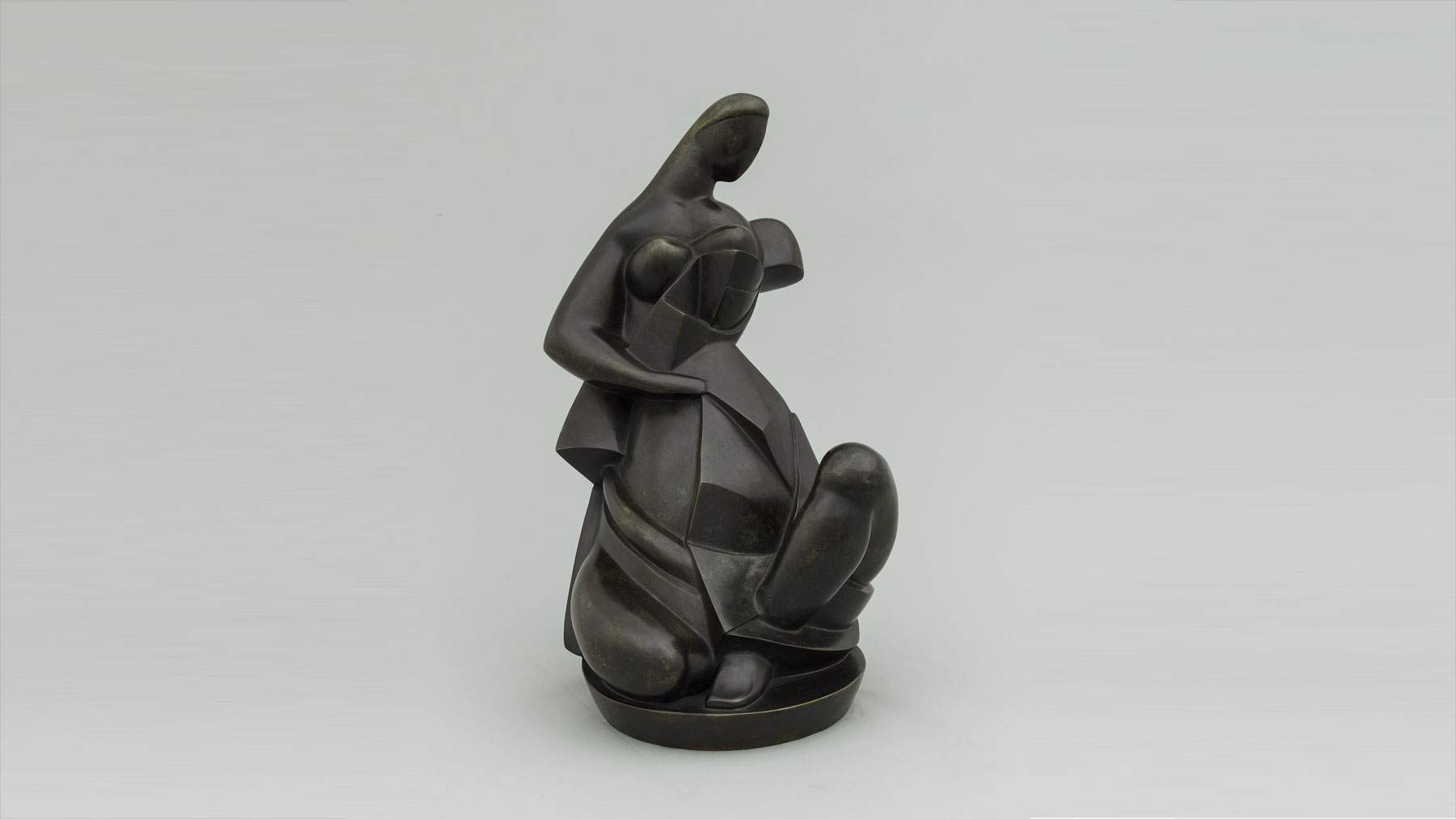The ML Fine Art gallery in Milan presents a major exhibition dedicated to the American-Ukrainian painter and sculptor Alexander Archipenko (Kiev, 1887 - New York, 1964). Entitled Archipenko in Italy and curated by Maria Elena Versari, it is the first exhibition dedicated to Archipenko in Italy since the one held in Milan in 1963, and the first ever exhibition in an Italian private gallery. It runs from September 14 to December 12, 2021. The exhibition presents a selection of the artist’s sculptures, drawings, and sculpture-paintings, some of which come from the artist’s family, and aims to shed light on the relationship between Italian art and the American sculptor, originally from Ukraine. For this reason, his works will be presented together with those of the artists who were most inspired by his example, such as Umberto Boccioni, Gino Severini, Alberto Magnelli, Enrico Prampolini, Fortunato Depero, as well as Giorgio De Chirico and Carlo Carrà.
For the early Futurists, there was no shortage of opportunities to meet the sculptor personally and visit his studio in Paris. His fame, in the sphere of avant-garde art, was supported early on by Blaise Cendrars, André Salmon, and Guillaume Apollinaire. The latter in 1914 saw himself fired from the newspaper he wrote for for defending the works of his sculptor friend. Less well known, however, are his relations with Alberto Magnelli, who in that same year bought en bloc three of his most famous (and most radical) works then exhibited at the Salon des Indépendants. These include Pugilatori (Boxers), shown in the exhibition. Archipenko’s continuous formal experimentation and his relations with the Futurists even before 1914 fostered the spread of his fame in Italy. Particularly important was his invention of sculpture-painting, which, starting from the researches of Cubist and Futurist assemblage comes to create a new multi-material art form intended to bring together, precisely, painting and sculpture. As Maria Elena Versari suggested back in 2005, and as leading scholars in the field have since reiterated, Giorgio De Chirico and Carlo Carrà were inspired by Archipenko’s sculptures to devise the famous mannequins recurring in metaphysical painting. In 1920, with the retrospective organized on the occasion of the Venice International Biennial, the sculptor achieved definitive consecration and became the point of reference for a generation of artists who, while linked to the avant-garde, did not repudiate formal research on the human body and its representation.
Indeed, it is possible to find in many works of the Second Futurism more or less obvious references to Archipenko’s ideas: as in the researches of Enrico Prampolini, Nicolay Diulgheroff, Fillia, Fortunato Depero, but also of sculptors such as Mino Rosso, Regina and Thayaht. The works of these Italian artists are compared in the spaces of Via Montebello 30 with some masterpieces conceived in the very early 1910s and representative of the innovations introduced in sculpture by Archipenko: Draped Figure, from 1911, which influenced Umberto Boccioni’s sculptural researches; the aforementioned Boxers, from 1914; and Seated Figure, conceived around 1913 and which takes up the layout of the famous Medrano I. Also on display are drawings and gouaches from the same period, which well highlight contacts with Italian futurism on the one hand and with metaphysical painting on the other, and two polychrome sculpture-paintings that testify to the radical innovation Archipenko brought to the field of modern art.
Among the works of Italian art in the exhibition are Carlo Carrà’s Penelope (1917) and Alberto Magnelli’s Uomo con cappello (1914), a work created at the time of the famous purchase of the works exhibited in the Paris Salon, and which critics have recently related precisely to Archipenko’s experiments. Post-World War I outcomes are illustrated by Torso in space from 1935-1946, a sculpture made of aluminum, a material also used very often by Futurist artists. This work visually dialogues in the gallery spaces with the coeval research on the human figure by Fillia, Prampolini, Diulgheroff and Depero.
Archipenko in Italy is organized in collaboration with Stephenson art, London and with the support of the Archipenko Foundation.
Image: Alexander Archipenko, Draped Woman, Seated Woman (1911-1957; bronze, 55.9 x 31.8 x 32.4 cm; Estate of Alexander Archipenko)
 |
| Milan, from ML Fine Art the first exhibition on Archipenko in Italy after more than 50 years |
Warning: the translation into English of the original Italian article was created using automatic tools. We undertake to review all articles, but we do not guarantee the total absence of inaccuracies in the translation due to the program. You can find the original by clicking on the ITA button. If you find any mistake,please contact us.